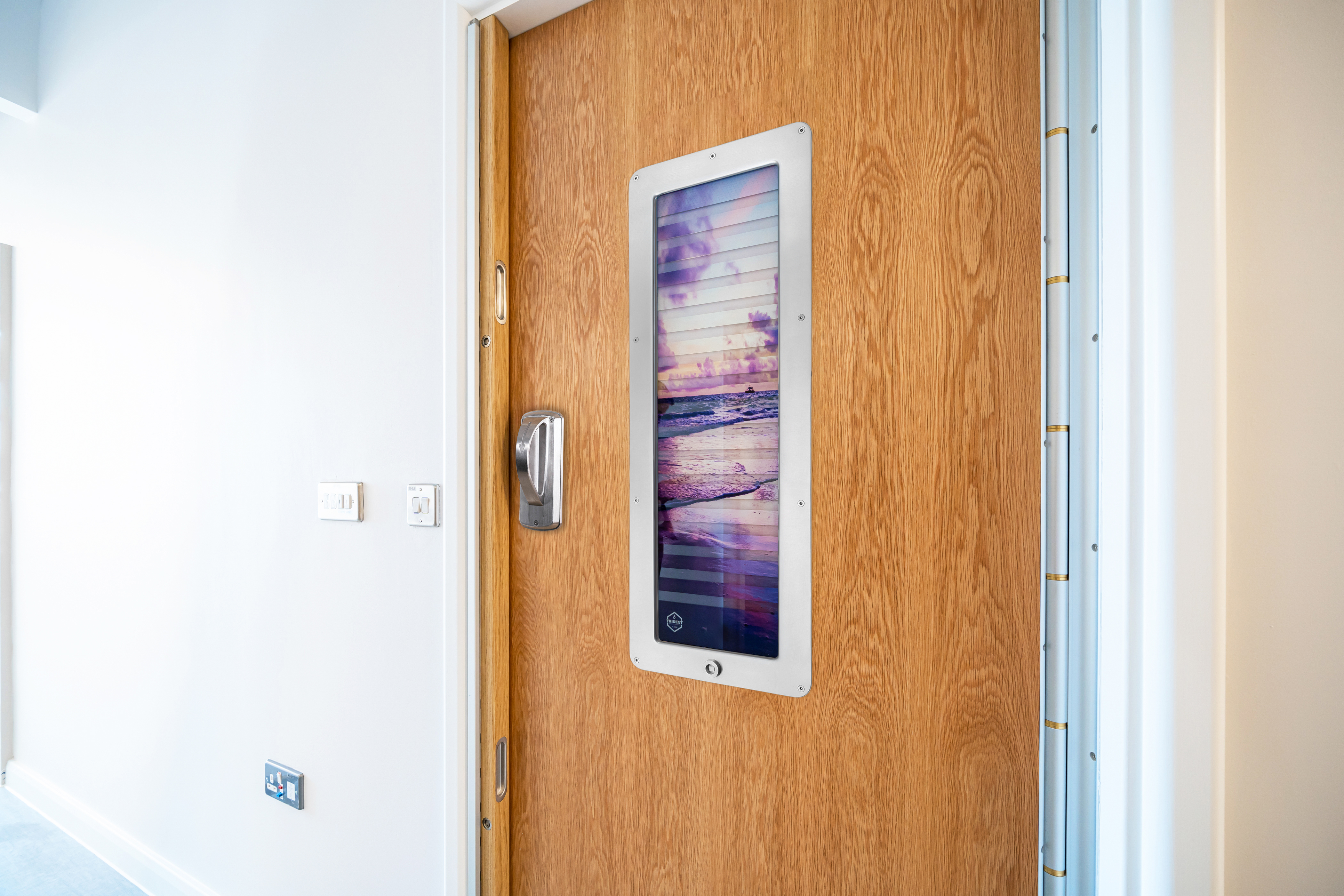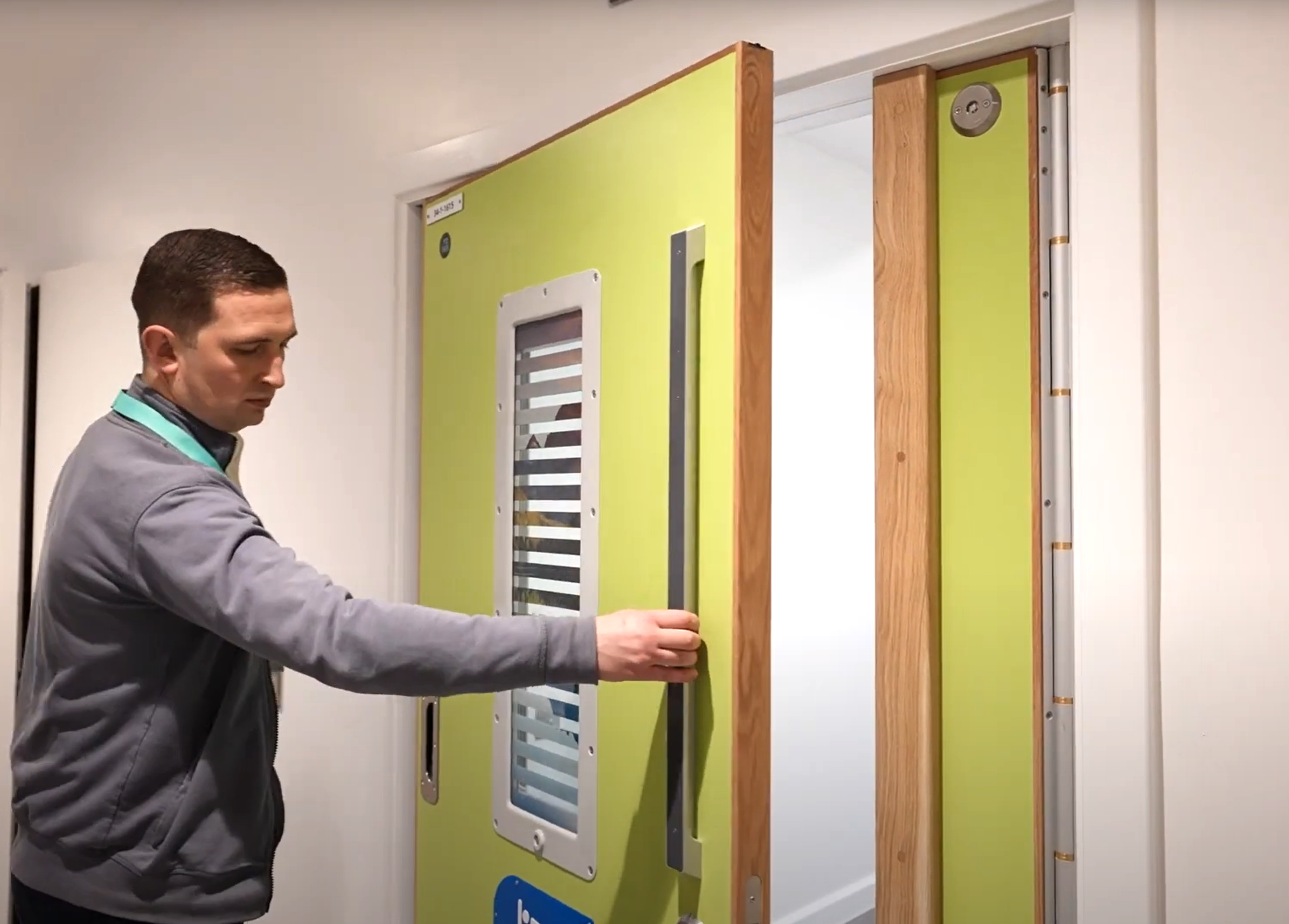Behavioral Health environments can often be an intimidating setting for patients and one that is faced during a vulnerable point in time. Clinical teams do all they can to create a welcoming and therapeutic space, yet the environment itself can either contribute to this effort or work against it.
One environmental factor that can play a part in how well a patient responds to the healing environment is color. Although color is by no means a solution for the difficulties faced by patients throughout behavioral health facilities, its potential to contribute to improving their well-being should not be ignored. With the attention given to color during project planning phases increasing, in today’s blog article we explore some of the ways color can affect a patient’s experience within a behavioral healthcare environment.

Comfort and safety
Busy clinical environments can commonly evoke feelings of unease for service users and, when designing a mental healthcare facility, it is important to consider whether specific environmental design factors will increase or decrease the likelihood of these feelings.
The use of warm, natural colors, such as blues and greens for example, can help create a welcoming and calm atmosphere, increasing the potential for patients to feel more at-ease in the given environment.
It is also important to consider the specific needs of the patient when making these design decisions. For example, when our UK-based counterparts collaborated with Coventry & Warwickshire NHS Foundation Trust on the Rainbow Unit at Brooklands Hospital for patients with autism, extensive consideration was given to the ward color scheme based on the service users’ needs.
As some autistic people can see colors differently and more intensely than neurotypical people, the shades, tones, textures, and appearance of colors were assessed throughout the ward design. In addition to their risk-reducing capabilities, Kingsway’s ligature-resistant anti-barricade door systems were selected for their versatility with regards to visual customization; allowing the NHS Trust to achieve their desired door finish and appearance that would help encourage grounded and calm feelings.

Well-being and coping with stress
Through ongoing collaboration and research with mental healthcare providers, clinical teams, architects, and Experts by Experience, the attention and consideration given to color in mental health environments has increased substantially in recent years. Together identifying the positive impacts color can have, standards have been raised in terms of delivering environments that are more therapeutic for service users.
These steps forward are a tremendous improvement from facilities of old, which although served functionally, may have lacked therapeutic design elements. Such facilities with institutional-like appearances may have missed the opportunity to help decrease the likelihood of evoking additional feelings of stress for the service user.
With the ability to contribute to improving a patient’s well-being, customization of our products through the use of color has long been an important consideration at Kingsway Group — something that ensured we were ready when our UK colleagues were approached by South West London & St George’s Mental Health NHS Trust to collaborate on the recently-opened Trinity Building at Springfield Hospital, London, UK.
Kingsway’s ligature-resistant and anti-barricade door systems were specified in a range of colors at the state-of-the-art new-build facility, helping to successfully deliver a modern and therapeutic environment for patients.
While color is by no means a solution to the difficulties faced by service users within mental health facilities, consideration should be given to color’s potential to contribute towards a more welcoming environment for patients. Carefully considering colors throughout the mental health environment helps in creating a sense of comfort and safety that can positively contribute to patient outcomes.
Through listening and collaborating with our behavioral healthcare partners, we are firmly committed to providing an extensive level of customization in order to meet the individual needs of patient groups. Color, as discussed today, accounts for one of the many ways in which we have incorporated customization options into our risk-reducing solutions and is something we seek to continually innovate and expand upon.
If you have any questions on the customization options that we offer, a member of our team would be glad to speak with you – reach out here.
If you’d like to learn more about our solutions… why not book an online demonstration?
We’ll provide you with live demonstrations of our anti-ligature solutions at a time of your convenience and answer any questions you may have. Simply request a demonstration below and we’ll be in touch!
